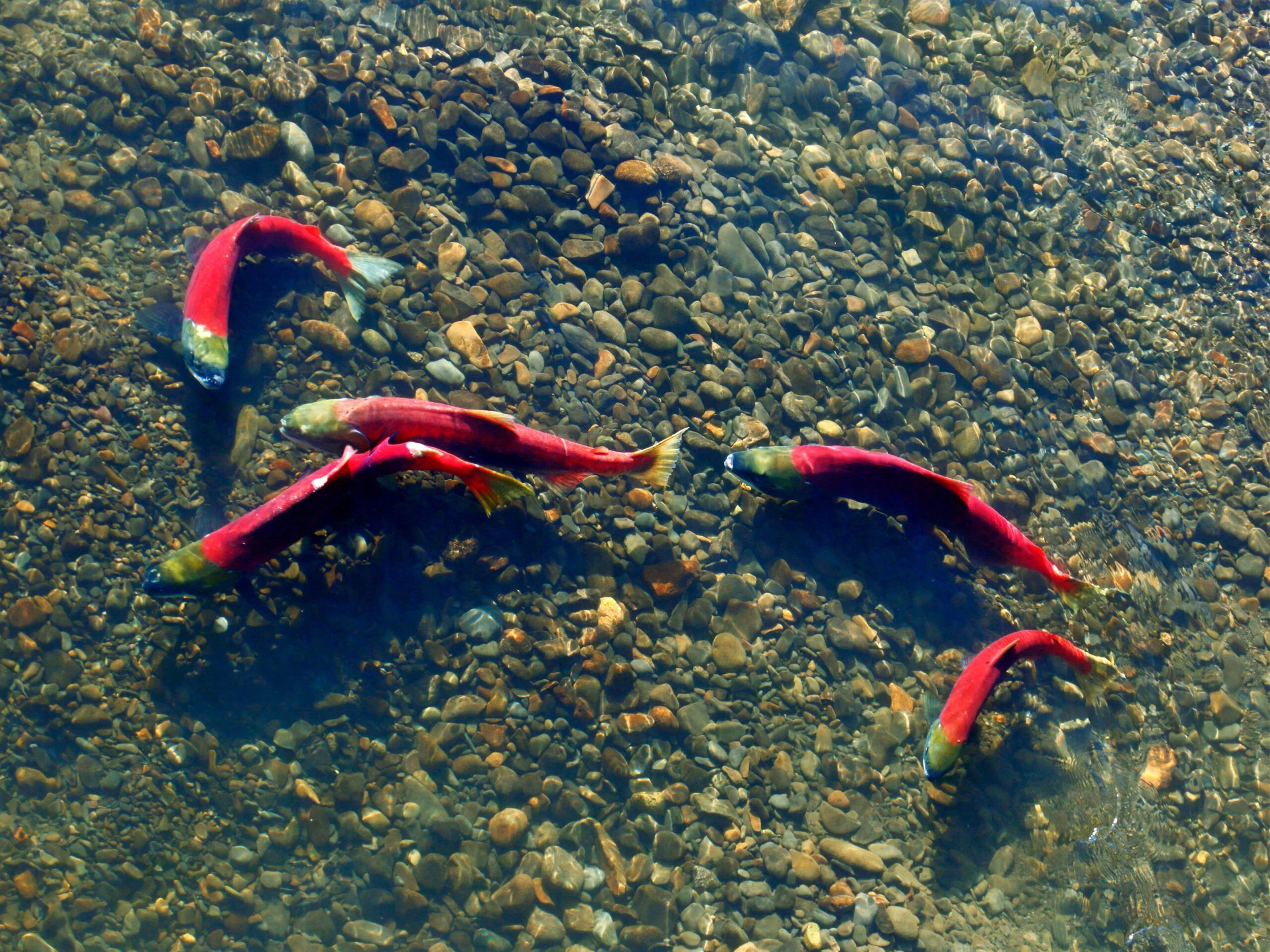Our “Normal” Salmon and Steelhead Population Isn’t What it Used to Be
Each generation sees the natural world through its own lens, sometimes unaware of what was lost before. This phenomenon is called shifting baselines—the idea that over time, we come to accept smaller, diminished salmon and steelhead returns as “normal”. For Idaho’s salmon and steelhead, this shift has serious implications for how we understand the status of Idaho’s iconic fish. Salmon steelhead were once incredibly abundant in Idaho’s rivers and lakes. It is estimated that in the late 1800s, the Columbia River Basin supported an estimated 10 to 16 million salmon annually. These fish were integral to the ecosystem, providing nutrients to the watershed, food for wildlife and sustaining Indigenous communities. Specifically, Snake River spring and summer chinook salmon runs were estimated to number between 2.5 to 3 million adults during the late 1800s. In recent years, the numbers are starkly different. In 2017, only about 5,800 wild spring-summer Chinook returned to the Snake River Basin, yet small increases in fish counts are often celebrated as success. Without remembering the abundance of the past, it’s easy to mistake recovery for something much smaller than it should be. This year’s steelhead season offers a clear example. While anglers may notice slightly higher steelhead returns in some of Idaho’s rivers, wild steelhead populations remain fragile. Hatchery fish keep fishing opportunities alive, but they cannot replace the diversity and resilience of wild fish. Meanwhile, wild salmon and steelhead across the region are still far below the numbers seen just a few generations ago.Idaho’s steelhead continue to face serious challenges, including migration obstacles, changes in river flow, and warming waters in reservoirs. Across the region, wild salmon and steelhead are a fraction of what they were just a few generations ago, highlighting the long-term losses that shifting baselines can obscure.Understanding shifting baselines also helps explain why we sometimes celebrate modest improvements while the larger picture remains bleak. When we start measuring "success" against only recent numbers, we risk accepting far less than a truly healthy fishery. By looking at historical records and listening to Indigenous communities who have depended on these fish for generations, we can gain a clearer picture of what we are missing and what a thriving salmon and steelhead population in Idaho should look like—and what we are aiming for. Shifting baselines remind us that “normal” isn’t necessarily healthy—it’s just what we’ve come to expect. Keeping the past in mind allows us to set appropriate goals, restore Idaho’s rivers, protect wild salmon and steelhead, and ensure these fish continue to play a vital role in our landscapes and communities for generations to come.
In recent years, the numbers are starkly different. In 2017, only about 5,800 wild spring-summer Chinook returned to the Snake River Basin, yet small increases in fish counts are often celebrated as success. Without remembering the abundance of the past, it’s easy to mistake recovery for something much smaller than it should be. This year’s steelhead season offers a clear example. While anglers may notice slightly higher steelhead returns in some of Idaho’s rivers, wild steelhead populations remain fragile. Hatchery fish keep fishing opportunities alive, but they cannot replace the diversity and resilience of wild fish. Meanwhile, wild salmon and steelhead across the region are still far below the numbers seen just a few generations ago.Idaho’s steelhead continue to face serious challenges, including migration obstacles, changes in river flow, and warming waters in reservoirs. Across the region, wild salmon and steelhead are a fraction of what they were just a few generations ago, highlighting the long-term losses that shifting baselines can obscure.Understanding shifting baselines also helps explain why we sometimes celebrate modest improvements while the larger picture remains bleak. When we start measuring "success" against only recent numbers, we risk accepting far less than a truly healthy fishery. By looking at historical records and listening to Indigenous communities who have depended on these fish for generations, we can gain a clearer picture of what we are missing and what a thriving salmon and steelhead population in Idaho should look like—and what we are aiming for. Shifting baselines remind us that “normal” isn’t necessarily healthy—it’s just what we’ve come to expect. Keeping the past in mind allows us to set appropriate goals, restore Idaho’s rivers, protect wild salmon and steelhead, and ensure these fish continue to play a vital role in our landscapes and communities for generations to come.

